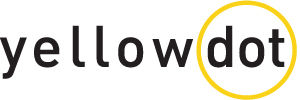While branding certainly encompasses more than corporate identity, your company’s logo will symbolize your value proposition more than anything else, so it pays to ask yourself the right questions before you hire a design firm. Keep in mind that a logo isn’t supposed to be a fancy, ornate statement that describes what you do. The purpose of a logo is to identify rather than to explain, which simply means that what’s important is what the logo represents — your brand.
Know what you’re looking for.
Before you start working with a design firm, ask yourself these questions:
- What product or service do you sell and who are your customers?
- How do you want to portray yourself to others? Friendly? Professional?
- How do you want people to feel about your image? Inspired? Happy? Energetic?
- Where will you use your logo? Will it be on a website and business cards only?
Will you need it for signage? On t-shirts? Will you need merchandising or tags?
This is where a bit of due diligence can really pay off and save you money. By answering these questions your designer will know which fonts to work with and whether to keep the design simple or more graphic. And you’ll get designs out of the gate that are closer to what you’re looking for, which will save you money and frustration.
Aim for instant recognition.
The shapes, colors and fonts used in your logo design should be unique and noticeably different from other logos within your market. Look at your competitors’ logos and make sure you’re not infringing on any copyrights. If you think your logo design is too close to that of your competitor, make sure your designer is aware of it so they can make the necessary adjustments. The last thing you want is to find out that a health club down the road has a logo that looks just like yours. Taking the extra effort to create a unique, instantly recognizable logo will pay off in the end.
Keep it simple.
Simple logos are often the most effective logos, when you consider the larger brand image and messaging. Remember, a logo is a symbol for your company and what it does. Simple logos are also easily reproduced in both web and in print. If you keep your design simple and bold, it will be just as readable in a fine newspaper print as it will enlarged on a trade show display. You’ll also save money in printing costs by having the ability to translate your logo effectively to black and white.
Focus on one main graphic element.
Designing a simple logo doesn’t mean you need to sacrifice creativity. Your design firm should experiment with typographic treatments like Verizon and bold designs like FedEx. If your company name fits, you can play with a graphic design like Starbucks. Whichever direction you decide to go in, keep in mind that your logo shouldn’t have more than one graphic element, whether it’s incorporated into typography or integrated as a separate mark. Too many graphic elements will not only make your company look confused, it will also it be difficult to work your logo in with other branding and marketing initiatives.
Choose an appropriate font.
Choosing a font for your logo design can be just as important as the overall design itself. A good design firm will be able to choose an appropriate font for your company services or product. If you have a financial services firm, for example, your font should convey trust, credibility and confidence. You would choose a sans-serif font that is simple and elegant. The font family should have different weights, such as light, medium and heavy so it can be customized to make it truly unique. Your color palette will also be more sophisticated rather than bright.
Sometimes a fresh pair of eyes can help. Here at Yellowdot, we help growing businesses by creating vibrant logos that reflect business values and are shaped for success. We take the time to understand who you are now, where you want to be, and how you should be positioned in the marketplace. Let us help you create an identity that takes your business to the next level.

